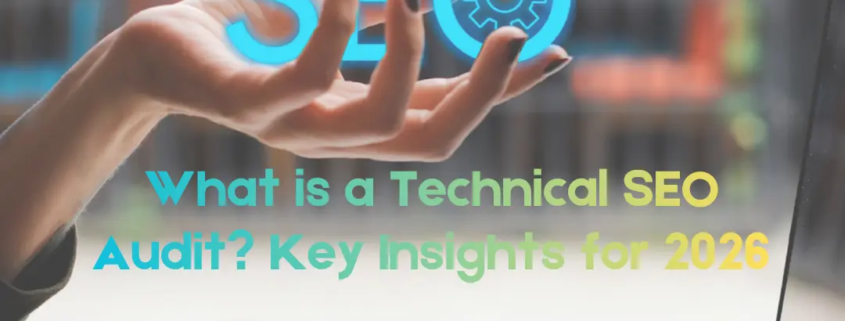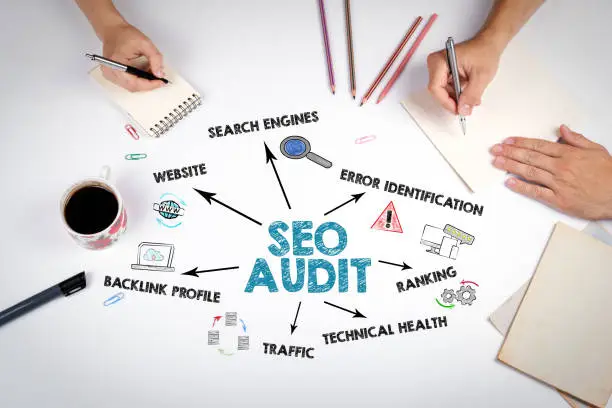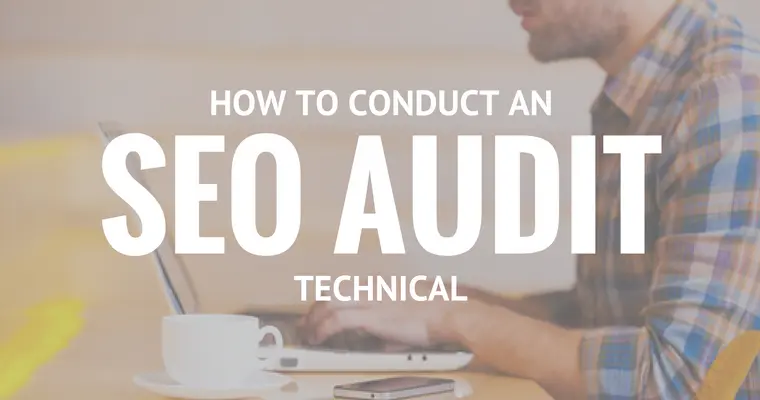What is a Technical SEO Audit? Key Insights for 2026
Suppose you are in a time when you are spending hours or days on your site, writing blogs, opening product pages, and waiting to see your page indexed by Google. The feelings are like waiting for a bus when already late for school.
Well, the fact is that even the most captivating material will not work in case of some technical problems in your website that are covered up. That is where the technical SEO audit is needed. You need to consider a complete health check of your site, crawl errors, indexing problems, page speed, mobile responsiveness, and security.
A professional technical SEO site audit will finally enable your site to rank. At the conclusion of this guide, you will know what a technical SEO audit is.
About Technical SEO Audits
A technical SEO audit is a comprehensive analysis of a website’s underlying infrastructure. Unlike content SEO audits that focus on keywords or on-page SEO audits that optimize metadata, technical audits dig into the foundation of your site. It is meant to make sure that search engines are able to crawl, index, and comprehend your site effectively.
Why Should You Have a Technical SEO Audit?
Technical SEO is being neglected even by experienced marketers. The technical SEO checklist is a tool that makes sure you do not overlook certain hidden problems that silently bring down your performance. The pages might appear good to you, but the crawl problems, duplicated content, or slowness cannot allow Google to rank the pages.
These issues are detected by a technical SEO audit consultant and clearly outlined in a roadmap in order to be fixed. Recent research by Surfer SEO shows that pages with high topical coverage (covering ~74% of relevant facts and subtopics) rank significantly better than pages covering only ~50% of the topic. That’s proof that a surface-level audit just isn’t enough anymore.
What Does a Technical SEO Audit Do?
The simplified role breakdown of his is as follows:
- Make sure that search engines can crawl and index your site.
- Identifies website structure and performance issues
- Improves website speed, usability, and rankings
Think of your website as a brilliant book. If Google can’t open it, none of your content matters. Crawling errors, duplicate pages, and load time delays are as though locked chapters or missing chapters. A technical seo consultant ensures that all pages are readable, indexable, as well as optimized.
Technical SEO Audit 2026 Trends
Backlinko shows that Google considers over 200 ranking factors, but fundamental technical factors, including crawlability, site speed, and Core Web Vitals, are required. This shows that half a million people quit a site that requires them to wait more than three seconds to load. In case your site is not technically optimized, all the struggles in the world will not help you.
Key Elements of a Technical SEO Audit
The technical audit of SEO is comprehensive. This is what is analyzed by professionals:
1. Crawling & Indexing
Your site does not rank when Google can’t crawl it. To resolve this issue, a technical SEO audit specialists examine:
- XML sitemaps to guide search engines
- txt files for crawl rules
- Crawl budgets to prevent wasted resources
Techniques Applied: Google Search Console, Screaming Frog.
Even on established sites, crawl problems are rather frequent. In case bots cannot access hundreds of pages, they will not be shown in search results. It is opening up a library with padlocked doors.
Hint: Be careful not to have 404 pages or redirects in your sitemap. A few broken links will also decrease your crawling efficiency and water down ranking signals.
2. Website Performance & Speed
Speed is not only a user experience; it is a ranking feature. Slow pages discourage the visitor and increase the bounces. Audit focus areas include:
- Core Web Vitals (LCP, FID, CLS)
- Page load times
- Mobile responsiveness
Metrics to Monitor:
- LCP (Largest Contentful Paint): The main content loading time.
- FID (First Input Delay): Your site’s responsiveness to users.
- CLS (Cumulative Layout Shift): The extent of the change in the page layout as it loads.
DashThis discovered that more than 50% of mobile sites, which have a load time of more than 3 seconds, are abandoned by users. The speed is not something to be questioned, and it is essential to keep the visitors and improve the ranks.
3. Site Architecture & URL Structure
A clear hierarchy and optimized URLs make crawling easier. Focus areas include:
- Proper page hierarchy
- Canonical tags to prevent duplicate content issues
- Internal linking strategies
Think of your site like a city. The URLs of the streets must be organized logically. Dead ends and meandering paths are a nightmare to visitors and search engines. Screaming Frog or Ahrefs can be used to show orphaned pages that are ignored.
4. Security & HTTPS
Security matters for rankings and user trust. For this, audits check:
- SSL certificates
- Avoiding mixed content warnings
- Making sure that the pages are HTTPS.
Google Chrome uses flags to indicate insecure websites, and this can significantly lower the number of clicks. Complete HTTPS implementation enhances the rankings and develops credibility.
Common Technical SEO Problems
A technical seo consultant can frequently find problems that silently affect the efficiency of the sites.
● Crawl Errors & Broken Links
The pages will not be indexed, and the broken links will irritate the user and also the bot. A few broken links will reduce the authority of the websites and reduce the rankings.
● Duplicate Content & Canonicalization Problems
Duplication of pages will confuse search engines because they will divide ranking signals. Proper use of canonical tags centralizes control and makes your content get listed correctly.
● Mobile Usability Problems
With Google’s mobile-first indexing, poor mobile experiences tank rankings. Responsive design and fast mobile load times are no longer optional; they’re essential.
Special Considerations for SaaS & Dynamic Sites
If your site relies heavily on JavaScript, dynamic URLs, or user authentication (common for SaaS platforms), your audit expert must include rendering checks and API-driven page indexing. Many high-ranking sites in 2025 lost traffic due to overlooked JS rendering issues.
Common Technical SEO Issues & Impact
| Issue | Impact on Website | Recommended Fix |
| Crawl Errors | Pages not indexed | Fix broken links, update sitemap |
| Duplicate Content | Ranking dilution | Add canonical tags |
| Slow Page Speed | Higher bounce rate | Optimize images, enable caching |
| Mobile Issues | Poor UX & rankings | Implement responsive design |
| JS Rendering Issues | Pages not indexed | Use server-side rendering or pre-rendering |
Benefits of Performing a Technical SEO Audit
Audits aren’t just about fixing problems; they unlock growth for your site.
● Improved Search Rankings
Search engines are rewarding crawlable sites, fast sites, and secure sites. Even minor improvements, fixing the canonical tags, making it fast, or correcting the mobile usability, can result in higher rankings.
● Better User Experience
The fast, mobile and error-free websites reduce the bounce rate. Extra vagrants spend more time, visit more and interact with your content.
● Increased Conversion Rates
Fixing technical issues on your site can reduce friction. Forms work properly, pages load fast, and users are more likely to subscribe, buy, or inquire.
Other Benefits:
- Identify hidden technical issues
- Ensure smooth indexing and crawling
- Improve website security and performance
How Do Technical SEO Experts Conduct Audits?
Professional technical SEO service providers follow a systematic approach. They not only make a list of errors, but also suggest solutions and help you with the ranking of your site. Here is the complete process they follow.
- Website Crawl & Analysis
- Performance & Speed Testing
- Audit Report
- Recommendations
During this process, audits use different tools for particular outcomes (mentioned in the table below)
| Step | Tools Used | Key Outcome |
|
Screaming Frog, GSC | Identify crawl errors & missing pages |
|
PageSpeed Insights, GTMetrix | Improve Core Web Vitals |
|
SSL Labs, Mobile-Friendly Test | Ensure a secure & mobile-ready website |
|
Data Studio, Excel | Actionable recommendations |
How to Prioritize Technical SEO Fixes After an Audit
Consider the following points when trying to fix technical SEO issues with your site. And move from high priority to low to get quick results.
| High Priority | Medium Priority | Low Priority |
| ● Crawlability issues
● Site downtime ● Major broken links |
● Page speed optimization
● Mobile UX issues |
● Minor meta tag fixes
● Image alt text adjustments |
Note: Focus first on the elements that affect search engine access, user experience, and security. Everything else comes later.
Case Study Example
One of the mid-sized e-commerce sites experienced an abrupt decrease in traffic. On hiring a technical SEO audit consultant, they found out:
- 25% of pages had crawl errors
- Core Web Vitals scores were below the threshold
- Duplicate content on category pages
After implementing recommendations from the audit experts:
- Google indexed all pages properly within two weeks
- Page speed improved by 60%
- Organic traffic increased by 45% within three months
Pro Tips for Technical SEO Audit in 2026 & Beyond
● Incorporate SEO in the Development Process
Collaborate with developers to make sure that there are no new features that prevent crawlability or speed. In the case of developer and SEO working together, we avoid that dreaded shock of not being able to crawl a page, sitemaps that become out of date, or even the content that is full of JS that search engines cannot easily index.
Since Google is unable to crawl your content then it is essentially invisible anyway. The inclusion of SEO in releases implies a decrease in the number of technical regressions, improved performance, and reduced panic-fixes in the aftermath of the release.
● Pay Attention to Mobile-First Optimization
In 2025, it is recorded that 64% of the traffic came from mobile. So, if you are ignoring this factor, you are missing the bulk of your audience. And when users are on mobile, tolerance for slow load times is very low. If your mobile site drags, you lose them before they even see your brand. So responsive design, server-timing, image optimization, viewport rendering, all of it matters.
Also, mobile users behave differently. According to Sistrix, while less than 30% of mobile searchers click the very first result, overall mobile clicks still total around 85% of searches that lead to a click. Simply put, Mobile users will click; just make sure your site earns that click.
● Check Structured Data & Schema Markup
Pages using structured data can see 20-40% higher click-through rates (CTR) compared to those without. Case studies show sites with rich result eligibility reported an 82% higher CTR.
Why does this matter? Because showing up is one thing; getting the click is another. If your snippet has review stars, pricing, FAQs, and breadcrumbs, people feel more confident, so they click more. If you skip structured data, you’re giving rivals a visibility edge.
So add JSON-LD for products, FAQ schema for blog pages, and LocalBusiness schema for your physical or service areas. Then monitor via Google Search Console’s “Enhancement” and “Search Appearance” reports to see real-world impact.
● Check Web Vitals Regularly
Performance isn’t a one-and-done item; the web changes frequently. New content gets added. Features get deprecated. So you’ve got to keep measuring. Core Web Vitals (LCP – Largest Contentful Paint, CLS – Cumulative Layout Shift, INP/EX – interaction metrics) are the metrics Google uses to assess real user experience.
When you follow them over time, you will find out things, such as: Hey, now that we installed that heavy carousel that LCP jumped 2.1 s to 3.5s. And you can roll back or optimize.
Also, because mobile is dominant and users are impatient, any lag in Core Web Vitals can lead to bounce and ranking drop. Make these checks part of your sprint reviews. Set alerts for threshold breaches. Use historical trend data to show progress to stakeholders.
● Consider Site Security as a Ranking Factor
It’s foundational. Recent statistics show that a valid SSL certificate was used on approximately 87.6% of websites in 2024. That is better; however, it is still 12% plus of sites that were either not encrypted or improperly configured.
Imagine your site being the only one in your niche that still shows “Not Secure” in someone’s browser. That kills trust. Google’s transparency report shows HTTPS adoption rates of 94% for Google’s own services. And remember that mixed content problems (where some resources load via HTTP) can cause browsers to block or warn users. Those warnings equal lost traffic.
So audit your site, fix TLS versions, and ensure everything from images to fonts to scripts via HTTPS. Add HSTS, check third-party integrations. Make it part of your architecture review.
Final Thoughts
A technical SEO audit is not a one-check solution; it is the key to long-term success in the field of SEO. Search engines will be smarter, and people will be less patient in the coming years. Therefore, fixing hidden technical problems will ensure your content has a fighting chance, improve user experience, and convert visitors into customers.
If your site hasn’t had a professional technical SEO site audit, now is the time. Hiring a technical SEO services company ensures every issue is addressed, transforming your website into a high-performing, lead-generating machine.
Don’t wait until your competitors outrank you. Book a consultation today with a technical SEO audit consultant and start seeing measurable improvements in:
- Search engine rankings
- Website traffic
- User experience
- Conversion rates
FAQs
What does a technical SEO audit entail?
Crawl analysis, Core Web Vitals, mobile usability, security checks, URL structure and so on.
What is the frequency of a technical SEO audit?
On average, every 6-12 months or when significant site changes have been made.
Will a technical Google audit raise my rankings?
Absolutely. Crawl errors, page speed, and duplicate content are all issues that have a direct effect on rankings to fix.
Do I need a technical SEO services company for audits?
While DIY is possible, a technical SEO audit consultant












